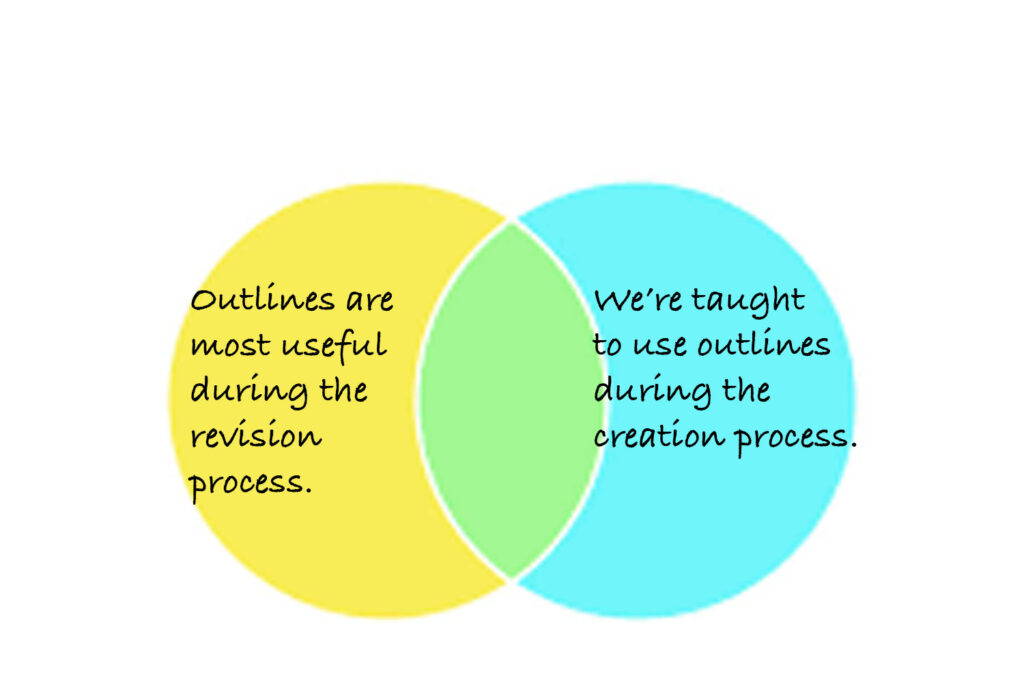
While outlining before writing can stifle writing efforts, the reverse outline may help students make existing material much stronger. The “reverse” outline resembles a regular outline, which glosses or summarizes each paragraph’s main ideas. However, students make a reverse outline not to organize their future writing but to organize and expand upon writing they have already completed.
In completing reverse outlines, students will likely find paragraphs that contain multiple topics and buried topics that deserve to be expanded upon. They will also likely discover that their paper would be more effective if organized differently.
The process of creating a reverse outline is therefore generally two-fold. First, students go through their drafts, indicating each time a new topic or idea is introduced and making an outline accordingly. Then, they make a new outline, grouping topics according to how they should be organized rather than how they currently are organized and indicating where they hope to expand.
Before I teach students how to make reverse outlines of their own writing, we practice outlining, “Welcome to Another Writing Class!” by Rob Drummond, which I generally assign on the first day. You can find my outline of that piece here.
